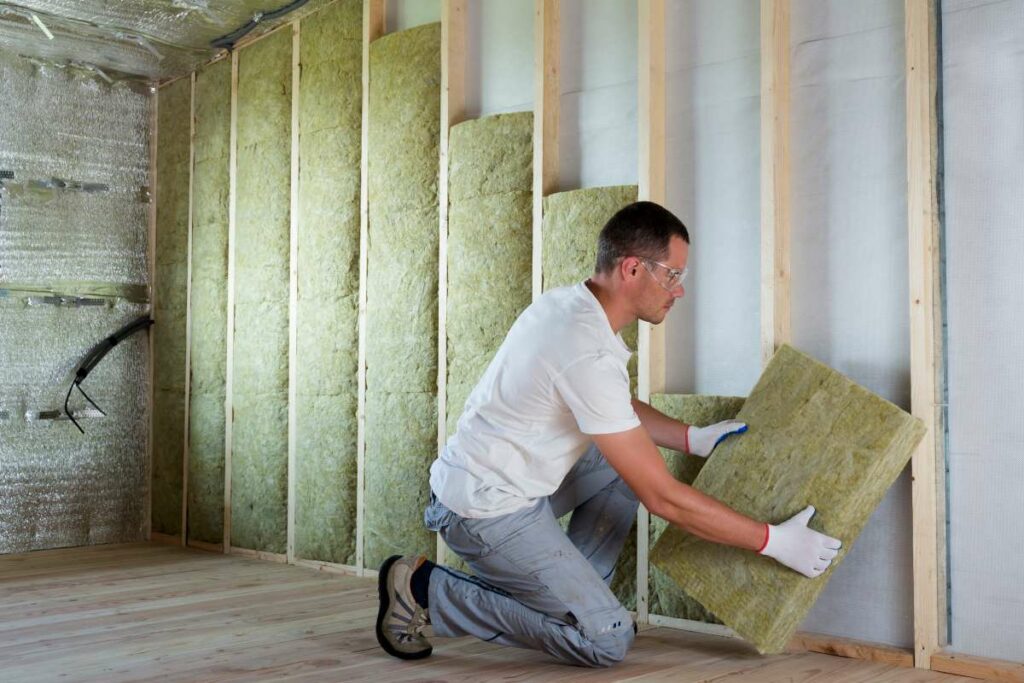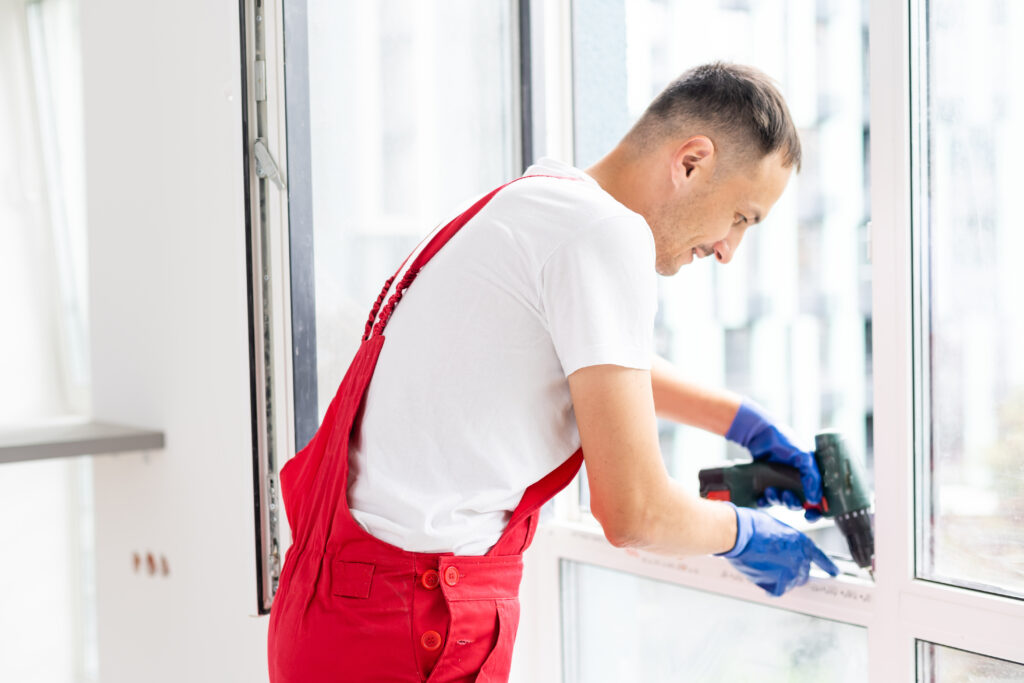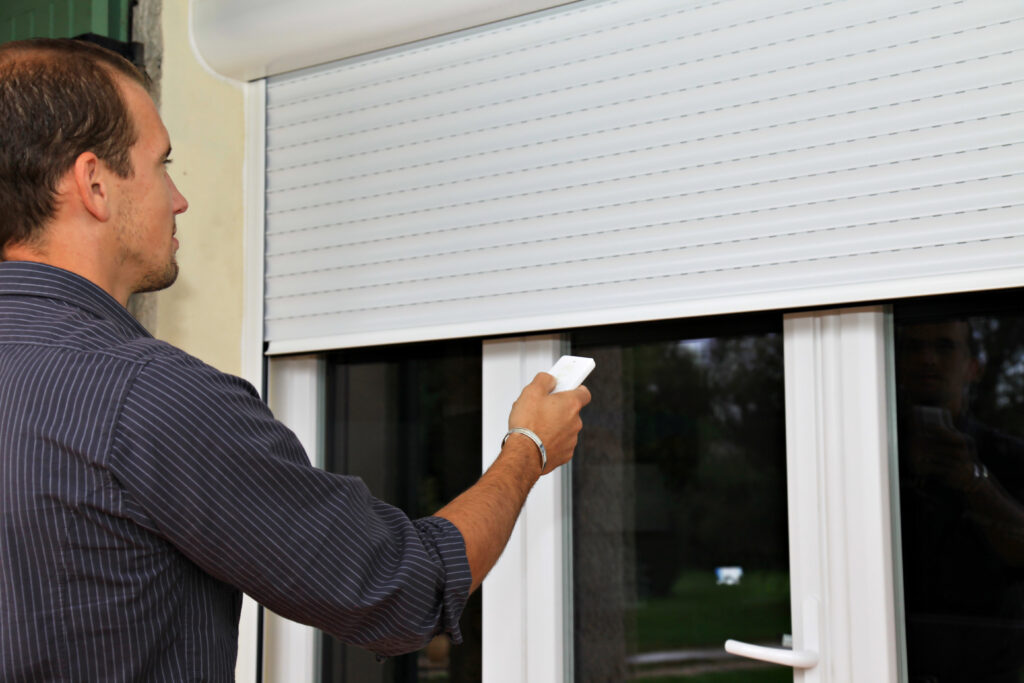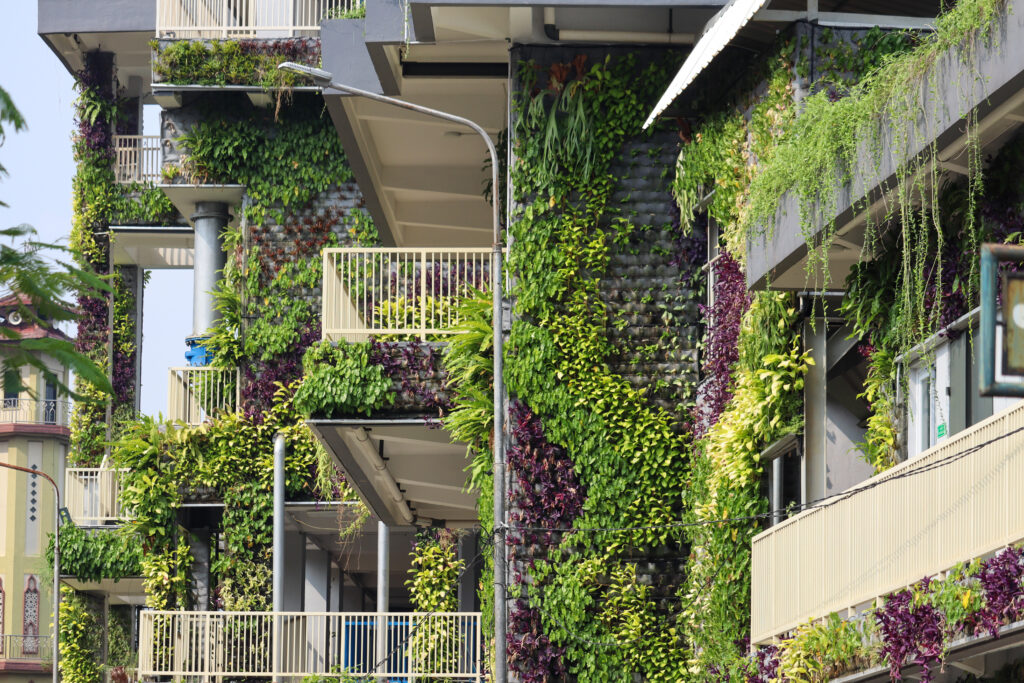Summer heat : how to preserve your home and your comfort ?
The forecasts are clear and the discomfort is already being felt: our summers are set to become hotter and hotter and extreme heat waves more frequent. The whole country is affected and the migration of holidaymakers, or even residents, to Brittany or Normandy does not seem to be enough to avoid suffering the effects.
Until now, heat resilience has not been a criterion in housing construction, but it will certainly become one in the coming years. In the meantime, there are some good habits and arrangements that can help us to cope better with the heat and keep our homes cool. Here are our 6 tips for doing so.
#1 Limit the heat entering the property
Let’s start with a basic principle: a home does not have to turn into an uncomfortable oven as soon as a temperature peak occurs outside. The easy way out is to air-condition all our buildings: it is not good for the environment or for our budgets. Instead, the strategy should be to design buildings differently.
Heat-resistant materials
For households planning to build or renovate, the use of more heat-resistant materials is a matter of course: by refusing to store heat, they will avoid transmitting it to the interior of the building and thus help to keep the living space cooler. This includes the materials of the roof, the walls and even the colour of the paint on them. A white paint will have a much higher albedo than a dark paint, and will therefore reflect a large part of the sun’s radiation and the associated heat back into the atmosphere. In cities, this can prevent the formation of urban heat islands, a phenomenon that increases the nuisance of heat waves.
More efficient insulation
In addition to the structural materials, the insulation of the property serves to keep the heat in during the winter as well as to keep it out during the summer! It should therefore be reinforced if necessary, using the most modern and therefore most effective processes. The attic can be targeted, for example by blowing in a layer of wood wool or other material in a uniform manner. The floor and walls are also concerned.
A little tip: if the addition of a layer of insulation seems appropriate, consider applying it from the outside and lining it with an attractive cladding. The benefit is threefold: complete insulation from the outside considerably limits the formation of thermal bridges, avoids the loss of living space inside the house, and eliminates the need for a façade renovation.

#2 Focus on efficient and protected joinery
The next step in inviting the heat to stay outside is to make the windows and doors impervious to the rising temperature. This can be done by working on the components and shielding them from the sun.
More efficient joinery
Heat enters a house primarily through the openings. Even when closed, windows are a weak point if they are not well insulated. The joinery must be tightly fitted into the building (except for essential ventilation), and the glazing must provide sufficient insulation against both cold and heat.
Therefore, double-glazed windows are preferable, or even triple-glazed windows if you are planning to make your home “passive”. However, be careful not to obtain a counterproductive effect, if, for example, the insulation is such that you have no choice but to open the windows in winter to avoid suffocating from the heat. In most cases, good double glazing will suffice.
On the quotations of the craftsmen, you will necessarily find the thermal performance index of the proposed product, materialized by the acronym Uw. Since it quantifies heat loss, you should look for the lowest Uw value: 1 to 1.3 are quite relevant scores.
Attention should also be paid to access doors and bay windows which, because of their large size, can have an even greater impact on the overall insulation.

The addition of roller shutters
No matter how good a window is, it will still struggle to keep the house cool if it is directly exposed to the sun. To improve insulation, roller shutters that are lowered at the hottest times of the day will keep the sun’s rays out and thus limit the heat influx.
If the installation is modern, you can also consider using home automation to automatically manage the position of the roller shutters at different times of the day, according to a programme that you have defined beforehand.

#3 Preserve the surroundings of the house
Let us now turn to the outside of the house or flat. Depending on the case, installations can help to create a cool island around the house, which will then receive less heat. Because a terrace, and even more so a balcony, can quickly become a radiator in summer!
Depending on the size of the terrace, the installation of a pergola and other covering structures, or awnings, will provide welcome shade. Don’t hesitate to provide them for all the surfaces of the house directly exposed to the sun.
#4 Plant your plot of land, and your house!
They say that one tree is worth five air conditioners. What is certain is that the shade and coolness provided by the vegetation is tangible, making it more effective than any hard-wall installation you could imagine.
Plenty of planting on your property, whether close to the house or not, will make it more resilient to heat peaks. Your arbours and pergolas will benefit from being covered with a climbing plant. And if your building is suitable, you can consider planting the façade or even the roof, for an optimal protective effect.

#5 Building with a particular orientation
For future owners who have opted for a new building and are free to make their own choices, it is not very relevant today to face directly south. More and more houses are turning their backs on it and choosing a northern orientation. Another option is to face east-west, so that certain parts of the house are exposed to the sun at selected times.
In all cases, the position of the sun at different times of the day should guide the design, with the necessary adjustments to achieve the desired thermal comfort.
#6 The right reflexes for everyday life
Although all of the measures mentioned above are extremely effective in resisting a one-off heat peak, the indoor temperature will invariably rise in the event of a heatwave lasting several weeks. To preserve comfort by limiting the use of air conditioners, certain reflexes should be adopted.
Sleeping in the right place
While we are on the subject of orientation, let us add that placing the bedrooms on the eastern side of the house will prevent them from suffering the full heat of the afternoon. It will be possible to feel a pleasant difference in temperature at bedtime.
Ideally, a room on the ground floor will generally be cooler than one on the upper floor, as the heat rises. In the absence of a dedicated room, it is still possible to move into your living room for a few nights if the heat wave lasts and the nights become difficult.
Ventilate at night, seal off during the day
Not opening your windows in the middle of the afternoon is a matter of course. Airing out as late as possible – or as early as possible – is also a good idea. Although the night-time temperature does not always fall below 20°C during hot summer spells, it is nevertheless useful to air out just before going to sleep if the outside temperature is lower than the temperature in the bedroom.
Early in the morning – as early as possible – air out all the rooms, before insulating the house as much as possible to keep it cool. Close the windows and shutters.
Use damp cloths
If the indoor temperature is still too high and you don’t have an air conditioner, grandma’s tricks can save you. For example, place a damp cloth in front of the fan to cool the (hot) air flow. The air flowing through it will be naturally cooled. A damp cloth in the room, even without a fan, will also make the atmosphere more pleasant by evaporating the moisture.
Hanging a damp cloth in front of the window when airing out in the evening can further cool the air before nightfall. Finally, you can try making your own air conditioner by placing ice in front of a fan.
Unplug unnecessary electrical appliances
One last useful tip: don’t leave your electrical appliances on if you are not using them! All appliances, televisions, chargers, computers, etc., give off heat when in use. It is therefore counterproductive to leave them plugged in, not to mention the energy expenditure involved, which is not good for your wallet or the planet, and current events will not contradict us!
From major works to the smallest gestures, the more measures you put in place to better resist heat waves, the more noticeable the effect will be. It’s up to you!


